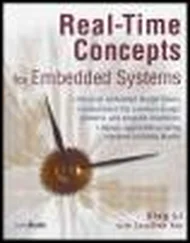307 289
308 290
309 291
310 292
311 293
312 294
313 295
314 296
315 297
316 298
317 299
318 300
319 301
320 302
321 303
322 304
323 305
324 306
325 307
326 308
327 309
328 310
329 311
330 312
331 313
332 314
333 315
334 316
335 317
336 318
337 319
338 320
339 321
340 322
341 323
342 324
343 325
344 326
345 327
346 328
347 329
348 330
349 331
350 332
351 333
352 334
353 335
354 336
355 337
356 338
357 339
358 341
359 342
360 343
361 344
362 345
363 346
364 347
365 348
366 349
367 350
368 351
369 352
370 353
371 354
372 355
373 356
374 357
375 358
376 359
377 360
378 361
379 362
380 363
381 364
382 365
383 367
384 368
385 369
386 370
387 371
388 372
389 373
390 374
391 375
392 376
393 377
394 378
395 379
396 380
397 381
398 382
399 383
400 384
401 385
402 386
403 387
404 388
405 389
406 390
407 391
408 392
409 393
410 395
411 396
412 397
413 398
414 399
415 400
416 401
417 402
418 403
419 404
420 405
421 406
422 407
423 408
424 409
425 410
426 411
427 412
428 413
429 414
430 415
431 416
432 417
433 418
434 419
435 420
436 421
437 422
438 423
439 424
440 425
441 426
442 427
443 428
444 429
445 430
446 431
447 432
448 433
449 434
450 435
451 436
452 437
453 438
454 439
455 441
456 442
457 443
458 444
459 445
460 446
461 447
462 448
Power Electronics-Enabled Autonomous Power Systems
Next Generation Smart Grids
Qing-Chang Zhong Illinois Institute of Technology & Syndem LLC Chicago, USA

This edition first published 2020
© 2020 John Wiley & Sons Ltd
All rights reserved. No part of this publication may be reproduced, stored in a retrieval system, or transmitted, in any form or by any means, electronic, mechanical, photocopying, recording or otherwise, except as permitted by law. Advice on how to obtain permission to reuse material from this title is available at http://www.wiley.com/go/permissions.
The right of Qing‐Chang Zhong to be identified as the author of this work has been asserted in accordance with law.
Registered Offices John Wiley & Sons, Inc., 111 River Street, Hoboken, NJ 07030, USA John Wiley & Sons Ltd, The Atrium, Southern Gate, Chichester, West Sussex, PO19 8SQ, UK
Editorial Office The Atrium, Southern Gate, Chichester, West Sussex, PO19 8SQ, UK
For details of our global editorial offices, customer services, and more information about Wiley products visit us at www.wiley.com.
Wiley also publishes its books in a variety of electronic formats and by print‐on‐demand. Some content that appears in standard print versions of this book may not be available in other formats.
Limit of Liability/Disclaimer of Warranty MATLAB ®is a trademark of The MathWorks, Inc. and is used with permission. The MathWorks does not warrant the accuracy of the text or exercises in this book. This work's use or discussion of MATLAB ®software or related products does not constitute endorsement or sponsorship by The MathWorks of a particular pedagogical approach or particular use of the MATLAB ®software. In view of ongoing research, equipment modifications, changes in governmental regulations, and the constant flow of information relating to the use of experimental reagents, equipment, and devices, the reader is urged to review and evaluate the information provided in the package insert or instructions for each chemical, piece of equipment, reagent, or device for, among other things, any changes in the instructions or indication of usage and for added warnings and precautions. While the publisher and author have used their best efforts in preparing this work, they make no representations or warranties with respect to the accuracy or completeness of the contents of this work and specifically disclaim all warranties, including without limitation any implied warranties of merchantability or fitness for a particular purpose. No warranty may be created or extended by sales representatives, written sales materials or promotional statements for this work. The fact that an organization, website, or product is referred to in this work as a citation and/or potential source of further information does not mean that the publisher and author endorse the information or services the organization, website, or product may provide or recommendations it may make. This work is sold with the understanding that the publisher is not engaged in rendering professional services. The advice and strategies contained herein may not be suitable for your situation. You should consult with a specialist where appropriate. Further, readers should be aware that websites listed in this work may have changed or disappeared between when this work was written and when it is read. Neither the publisher nor author shall be liable for any loss of profit or any other commercial damages, including but not limited to special, incidental, consequential, or other damages.
Library of Congress Cataloging‐in‐Publication data applied for
HB ISBN: 9781118803523
Cover Design: Wiley
Cover Images: Electric Car © Nerthuz/Getty Images, Computer Technology © RoyFWylam/Getty Images, Led light bulb © ppart/Shutterstock, Industrial electric motor © scanrail/Getty Images, Hydro dam water © ChrisGorgio/Getty Images, Solar Panel © filo/Getty Images, Energy © Voyagerix/Shutterstock, Nuclear power plant © TTstudio/Shutterstock, A field of wind turbines © linearcurves/Getty Images
To
Ms. Lihua Luo, my first‐grade teacher, who told me:
“you have nothing but potential. Keep moving forward. Never stop.”
and
Ms. Xiufen Lin, my third‐grade teacher, who told me:
“you have nothing but do not envy others.”
Figure 1.1 Structure of the book.
Figure 2.1 Examples of divisive opinions in a democratized society.
Figure 2.2 The sinusoid‐locked loop (SLL) that explains the inherent synchronization mechanism of a synchronous machine.
Figure 2.3 Estimated electricity consumption in the US.
Figure 2.4 A two‐port virtual synchronous machine (VSM).
Figure 2.5 SYNDEM grid architecture based on the synchronization mechanism of synchronous machines (Zhong 2016b, 2017e).
Figure 2.6 A SYNDEM home grid.
Figure 2.7 A SYNDEM neighborhood grid.
Figure 2.8 A SYNDEM community grid.
Figure 2.9 A SYNDEM district grid.
Figure 2.10 A SYNDEM regional grid.
Figure 2.11 The iceberg of power system challenges and solutions.
Figure 2.12 The frequency regulation capability of a VSM connected the UK public grid.
Читать дальше













